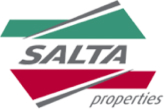Cultural Heritage Inductions are training about information on activity controls, management and procedures for any Aboriginal finding during development works.
The purpose of the Induction is to describe and demonstrate the Aboriginal cultural heritage relevant to the activity area for the construction of the development. This will create an awareness of Aboriginal cultural values and inform the personnel about the specific conditions of the Cultural Heritage Management Plan (CHMP) and the procedures set out for reporting any suspected Aboriginal cultural heritage that be uncovered or discovered during the works.
The induction will involve all personnel involved in the ground disturbance work during the project along with relevant cultural heritage stakeholders. The Induction will outline what Aboriginal cultural heritage is and discuss the Aboriginal places within the activity area, the legislation and management conditions and contingency plan that have been stated in the relevant CHMP. A copy of the CHMP must also be kept on site during the works.
Cultural Heritage Induction and Repatriation FAQs
When is a Cultural Heritage Induction necessary?
Inductions are necessary when they have been included in the cultural heritage management conditions. This agreement will be discussed with the Registered Aboriginal Party (RAP) for the activity area before the relevant CHMP is completed and sent for evaluation and approval.
Who can conduct a Cultural Heritage induction?
Inductions can be conducted by a qualified Heritage Adviser or a representative from the RAP if they are willing and available.
The induction must be organised by the Sponsor, with at least four weeks’ notice given when booking a Heritage Advisor or RAP representative.
When does the Cultural Heritage induction takes place?
The induction takes place after the developer has undertaken a CHMP and before the proposed project commences. Preferably the induction will be held onsite during the preconstruction stage. If a salvage is required as part of the conditions of the CHMP, then the salvage must be completed before the induction occurs.
Why the Cultural Heritage induction are important?
Cultural Heritage Inductions are important so that those involved in developments are culturally aware about the land they are working on. It also means that the workers are explained the procedures for the management of Aboriginal cultural heritage during construction, such as the discovery of Aboriginal ancestral remains and materials such as stone artefacts. This is to avoid unlawful harm to Aboriginal cultural heritage.
What is a Cultural Heritage Repatriation?
Repatriation is the return of Aboriginal cultural material. If possible and culturally appropriate it should be return to the RAP for them to securely store or to be reburied, depending on the RAPs policy. Heritage Advisors may initially retain custody of the material for the purpose of analysis, although this must not exceed six months from the completion of the activity.
When is a Cultural Heritage Repatriation necessary?
Repatriations are necessary when outlined in the relevant CHMP as part of the cultural heritage management conditions. The specific method will be determined during the CHMP consultation process.
Why is having Cultural Heritage Repatriations important?
It is important that objects that have been removed from their place of origin be returned. It is essential to consult with Aboriginal people as the existence of such object may enhance the cultural significance of the place. The link between place and object can be powerful and must be acknowledged and repatriation can allow Aboriginal people to have access to their objects that they may not if the objects and material were kept in collections. It is a mode to reconnection to their past.
Projects
Below is some information on projects Archaeological Excavations has worked on
Lyndhurst
The project involved an inland port at Lyndhurst as proposed by Salta Properties. The development would bring freight from Melbourne Harbour by rail to Lyndhurst where it would then be dispatched to trucks. The project aims to solve the issue of inner-city traffic congestion and provide greater opportunities for imports and exports in the southeast of Melbourne as it provides an alternative to road-based container transfer.
Drysdale Bypass
Drysdale Bypass is Bellarine Peninsula’s biggest road infrastructure project. Running 6 km from Jetty Road to the north of Whitcombes Road, the project involved the construction of four new traffic lanes separated by a central median, along with the construction of intersections, roundabouts and traffic lights.










